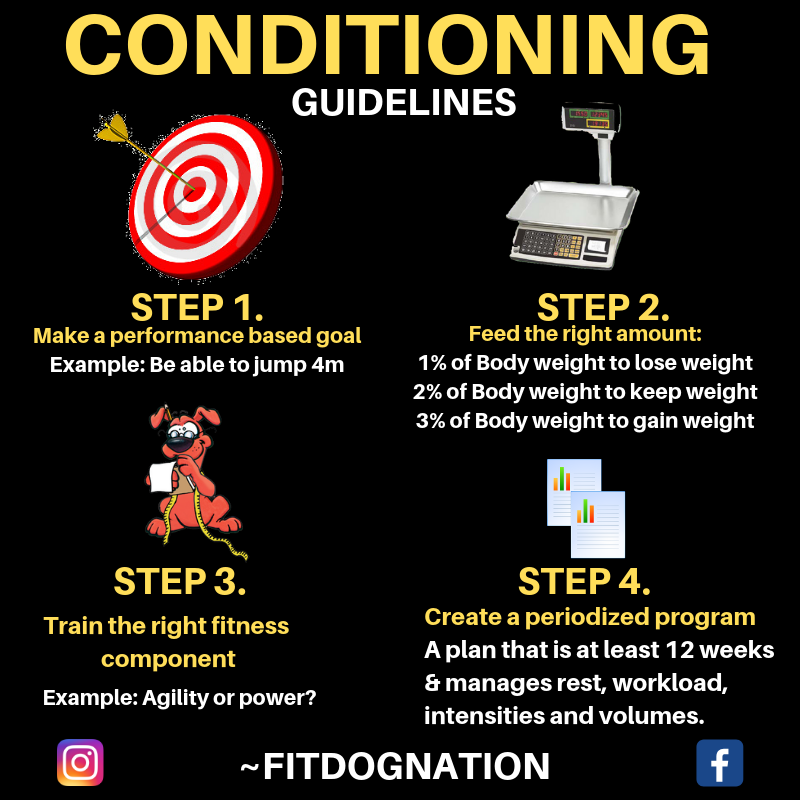
There are four main pillars to canine conditioning in order to have success in developing your dogs performance. In this post we are going to take you through each one.
STEP 1: MAKE A PERFORMANCE BASED GOAL
For us canine conditioning is all about health & performance first and foremost. Sure, looks are nice but these are a byproduct of conditioning for performance and shouldn’t be the focus. The reason being once you follow looks or confirmation the results gets distorted, the exotic breeds are a great example of this distortion. A good example of making a performance goal is to set out to achieve a 4 metre wall climb, run a distance in a certain time frame or pull a certain amount of weight.
STEP 2: FEED THE RIGHT AMOUNT
It is essential to feed the right amount. Every dog is an individual, however a guideline which works is to feed a certain percentage per lb of body weight based on your ideal weight. For example if you have a dog who is 60lbs in weight and they are overweight you should feed them a serving of food that weighs 1% of their total body weight. If you want to maintain their weight feed them 2% of their total body weight and if they are underweight feed them 3%. Of course this is a guideline and every dog is an individual. Remember when it comes to judging a dogs weight you must be objective. You can do this by using our 5 point body composition chart.
STEP 3: TRAIN THE CORRECT FITNESS COMPONENT
This is probably the most commonly made mistake. Most people condition the incorrect fitness component. There are five key canine fitness components; Power, Strength, Endurance, Agility and Speed. You must know which one(s) you need and how to conditioning them. For example. if your competing for a weight pull competition you had better cut out any endurance work if you want your dog to achieve their highest weight pull potential. The reason being that endurance work encourages more type I muscle recruitment which is exactly opposite to the kind of muscle your dog needs to recruit when doing weight pull. They need Type II muscle recruitment. A weight pull dog should only ever really be training strength and power which involves activities such as heavy pulls and short bursts of power based sprints on a high resistance treadmill such as the carpetmill.
STEP 4: CREATE A PERIODIZED PROGRAM
Finally and most importantly, you need to make a periodized program for your dog that is at least 12 weeks long. What does that mean? A periodized program is a conditioning program that manages your dogs rest, workout intensities and duration’s. You see, you cant just make it up as you go along. It needs to be planned and organised otherwise your dog can become over trained or go ‘stale’. When this happens the risk of injury increases and your dog is less likely to peak. For example, when we write our 12 week Canine Conditioning programs we plan light, moderate and hard days which are rotated. We also factor into our programs rest days and active recovery days.
If you got value from this post please like, comment and share!
To your dogs potential,
FITDOGNATION
Carmen says:
Could any dog breed participate as long if they can jump high enough and pull enough of the weights
FITDOG NATION says:
Yes all dogs can participate